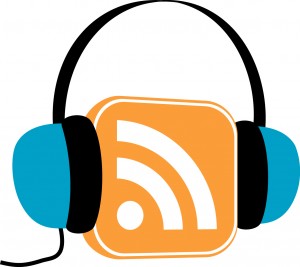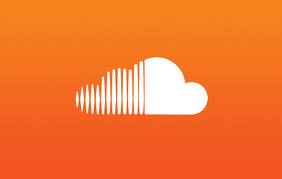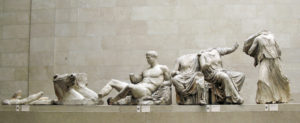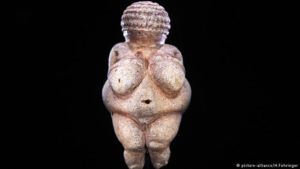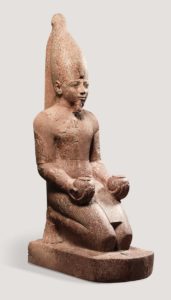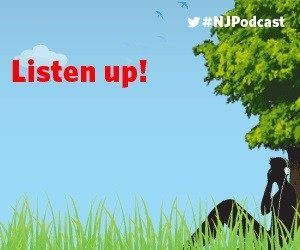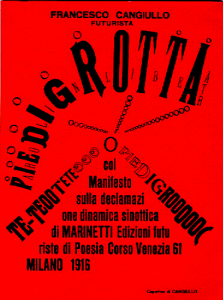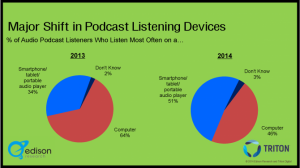Bronx Community college’s student population is faced with complex schedules, family 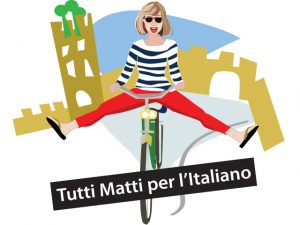 obligations and work commitments; consequently, the opportunity to offer online instruction finds an ideal environment for expansion. There are several strategies available in constructing successful online courses to produce mobile learning, especially for the foreign languages curricula and more specifically for Italian language courses. Although online language course offerings have increased, Italian is still falling behind in respect to other subjects offered at a college level. The scarcity of high-quality models to duplicate, lack of visibility and consideration, and academic incentives, make Italian online instruction still a work in progress rather than a consolidated reality. Some of the challenges revolve around which methodologies to implement, the risk of not utilizing the target language as often as required, and an uneasiness to release control of the classroom environment. Successful activities for language acquisition have proven to be blogs and wikis which stimulate interest, student productivity and activate independent reflective work. Podcasts help with pronunciation, listening and comprehension, facilitate the review of classroom material at anytime and anywhere. Difficulties have been observed within the blackboard platform in the use of the Discussion Board feature which in elementary language courses does not provide enough reflective and meaningful writing material due to the limited language skills of a beginners course.
obligations and work commitments; consequently, the opportunity to offer online instruction finds an ideal environment for expansion. There are several strategies available in constructing successful online courses to produce mobile learning, especially for the foreign languages curricula and more specifically for Italian language courses. Although online language course offerings have increased, Italian is still falling behind in respect to other subjects offered at a college level. The scarcity of high-quality models to duplicate, lack of visibility and consideration, and academic incentives, make Italian online instruction still a work in progress rather than a consolidated reality. Some of the challenges revolve around which methodologies to implement, the risk of not utilizing the target language as often as required, and an uneasiness to release control of the classroom environment. Successful activities for language acquisition have proven to be blogs and wikis which stimulate interest, student productivity and activate independent reflective work. Podcasts help with pronunciation, listening and comprehension, facilitate the review of classroom material at anytime and anywhere. Difficulties have been observed within the blackboard platform in the use of the Discussion Board feature which in elementary language courses does not provide enough reflective and meaningful writing material due to the limited language skills of a beginners course.
Blackboard, the platform adopted by The City University of New York, supported the creation of the Italian elementary online course. The instructor created a series of didactic-formative activities to place in each of the “buttons” of the Blackboard site, which followed the layout of modules created by the textbook in use. These included: grammatical sequence, introduction to cultural themes, and vocabulary. Each module (characterized by a separate button), was comprised of grammatical and lexical elements that were correlated with a number of different exercises. Apart from traditional exercises, the platform supported cross-words, instructor-made video podcasts, social networking sites (i.e. twitter), youtube videos, podcasted listening comprehension and dictation exercises, as well as work based on images to promote cultural understanding.Each written module corresponded with an audio file that was inserted in another Blackboard button labeled “Audio & Video” so that students could read and listen simultaneously, allowing for more exposure to pronunciation and to the language in general. The audio files contained in this section were saved as Wav. or Mp3s and students listened to them directly on the blackboard platform without having to download the files into their desktops. Students were also able to upload the files into their ipods. In an informal survey conducted among students, 40% uploaded the files into their ipods, and 60% listened to them several times during the semester directly on BB. Some students requested personalized audio files of vocabulary from each chapter. The content of the audio files varies from the simple pronunciation of verbs and vocabulary to readings and dictations. The use of the audio elements allows students to listen whenever they please and review lessons at every moment during the day, or before an exam, which is impossible in a traditional classroom. Due to the space limitations of Blackboard, some of the mp3 files are inserted into a free podcast server called PodOmatic, which is linked to the Italian Blackboard site. Through this server students were able to upload the mp3 files into their iPods or mp3 players for the same uses that are mentioned above. Access to audio files is very useful because it allows for custom made learning. Some audio files were recorded to satisfy specific student requests. Surpassing CDs and DVDs, which have become obsolete and non-renewable content, the pedagogical potential of multimedia technology makes it an advantageous choice for foreign language learning. There is another important benefit to using audio applications. In a community college, most students work, have families, and a large number take evening classes. In order for these students to come to school, they often face long commutes, which is common in large urban areas. Study time is sporadic and scarce, and the use of audio-files allows students to optimize the time they set aside for studying. They can, for example, review a lesson or listen to vocabulary during their “down” time. In a 2008 study by Damon Brewster and Hans von Dietze entitled Introducing Podcasts into Language Teaching, the researches evaluated the advantage for using podcasts in language learning. They found that increasing expose to authentic material will “help auditory learners, improve reading and writing, increase motivation, provide opportunity for language learning outside of the classroom and broaden its skills” (Damon Brewster and Hans von Dietze, 2008) Both students and instructors can use several programs (such as Audacity and WavePad) to record contents that allow one to record, modify, and edit sound. Audacity is an open source program that converts files into Mp3s by downloading an external component called LAME. Another program by Adobe that was used for podcasts in the Italian course is Adobe Captivate, which was released in 2001. At first glance it appears similar PowerPoint, but this program is more modern and efficient than the Microsoft version. Adobe Captivate allows for the creation of guided presentations, interactive demonstrations, simulations, podcasts, games and lessons. It also considerably compresses files and demonstrations and saves films to dimensions smaller than a traditional video. In teaching Italian, Adobe Captivate was used to create interactive tests. Students were able to choose from a vast series of samples: multiple choice; true and false and short written answers. Professors were able to add background music to these presentations and assign certain duration to tests, the results of which could be sent via email to the professor. The best way to save these presentations is the format SWF Flash drive, a program that is compatible with the Blackboard platform. The main role of all the didactic instruments described up to now is to stimulate students to develop an interest in the course they are taking and also showcase the instructor’s efforts in preparing material for them. The educator becomes a model of what can be done with technology, thereby making these tools more accessible and reproducible for students. The visual aspect of these presentations favors memorization and the learning of pedagogical contents such as grammar or vocabulary. Within Blackboard, the Italian elementary course contains “cultural videos” that facilitate vocabulary building. These videos can be shot with a simple digital camera and later uploaded onto the computer after being formatted with Windows Movie Maker. Topics can vary from short podcasts with information about Italian cities to interviews with local grocery and shop owners. Students can learn vocabulary pertaining to food, how to order at a restaurant, and how to talk about shopping and money. These podcasts also provide a model since they are short, concise, and can be easily replicated by students as part of their final oral examination for the course. These videos have several functions: vocabulary acquisition, review of grammatical structures, and exposure to information about general culture with the goal of obtaining international and/or global perspectives.This pedagogical approach, which is part of the already cited “content learning” method, also supports the creation of spontaneous language that happens in real situations and within cultural contexts. Linked to this theory is the principle of the Constructive Theory (2001, Williams & Irving), according to which students construct language directly though direct life experience. “Learners construct their own knowledge by looking for meaning and order; they interpret what they hear, read, and see based on their previous learning and habits. Students who do not have appropriate backgrounds will be unable to accurately “hear” or “see” what is before them.”(Thanasoulas, 2001).
Excerpt (with modifications) from my article published in 2015
Photo credit: http://www.studentessamatta.com/
 Some literature on the use of podcasting in higher education gives you an overview of the advantages of using podcasts for lectures. Some of the data shows that students prefer to listen to podcasts for review rather then for learning new content, as for using them during commute time or down time, research actually shows that students prefer to listen to podcasts sitting at a computer desk. However another study that came out in 2006 suggested that the flexibility of podcasting actually helped students manage their time more efficiently “the ability to replay lectures, and pause lectures” seemed to provide assist students time management concerns. Other advantages as stated by the article suggested that podcasting helped built a ‘sense of involvement with the subject, focus and motivation, a feeling of being part of the class’, ‘provides external students with the same opportunities as internal students’, ability to catch up if you miss an important lecture, ‘hearing additional examples/explanations given in lectures makes it much easier to understand than the ‘dry’ textbook’. ‘They bring subjects alive, allow a lecturer to bring in their own experiences and personality to make subjects more memorable, and bring more humanity to what can be fairly dry material. It can be soul destroying, reading rule upon rule, with no navigator to draw it all together and make it real'”.
Some literature on the use of podcasting in higher education gives you an overview of the advantages of using podcasts for lectures. Some of the data shows that students prefer to listen to podcasts for review rather then for learning new content, as for using them during commute time or down time, research actually shows that students prefer to listen to podcasts sitting at a computer desk. However another study that came out in 2006 suggested that the flexibility of podcasting actually helped students manage their time more efficiently “the ability to replay lectures, and pause lectures” seemed to provide assist students time management concerns. Other advantages as stated by the article suggested that podcasting helped built a ‘sense of involvement with the subject, focus and motivation, a feeling of being part of the class’, ‘provides external students with the same opportunities as internal students’, ability to catch up if you miss an important lecture, ‘hearing additional examples/explanations given in lectures makes it much easier to understand than the ‘dry’ textbook’. ‘They bring subjects alive, allow a lecturer to bring in their own experiences and personality to make subjects more memorable, and bring more humanity to what can be fairly dry material. It can be soul destroying, reading rule upon rule, with no navigator to draw it all together and make it real'”.